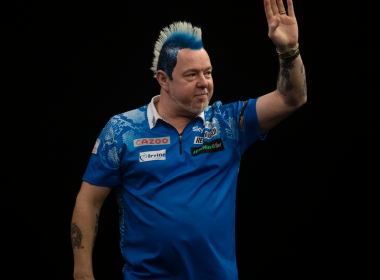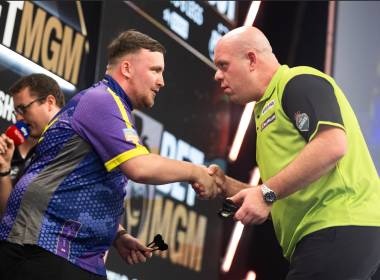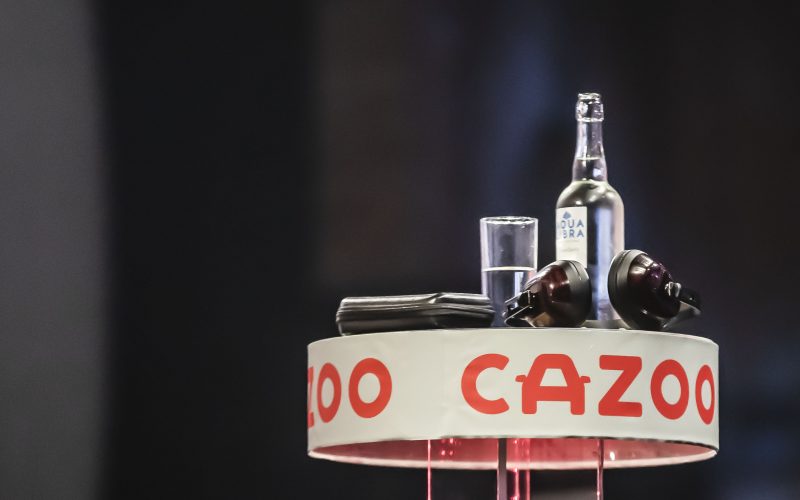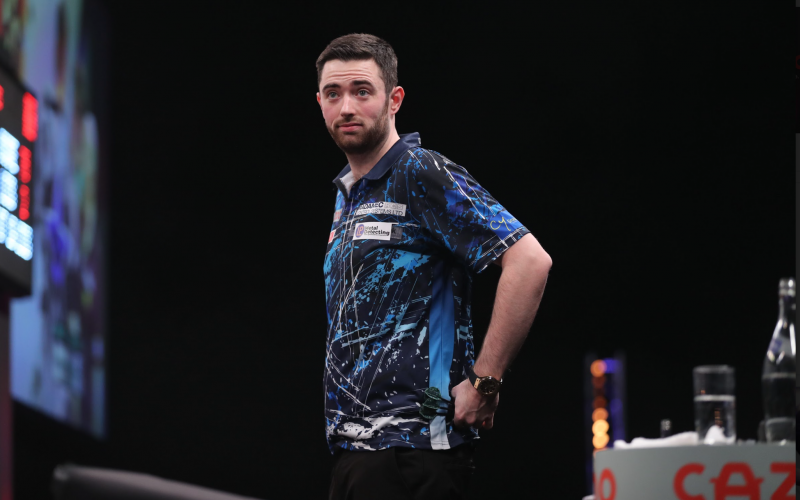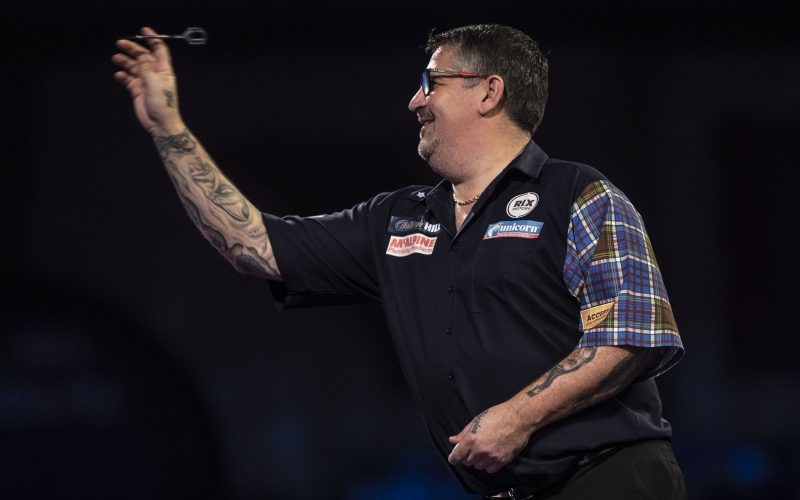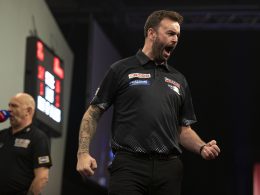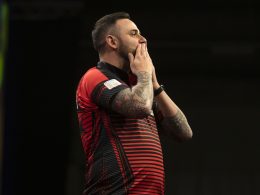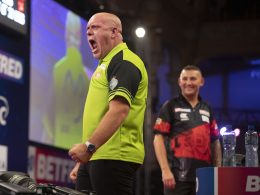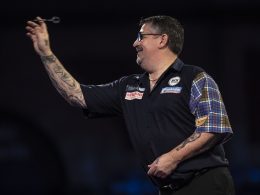Is there a noticeable difference?
Just over a month ago Gerwyn Price stole the quarterfinal headlines at Alexandra Palace when returning from a break wearing ear defenders in retaliation to another hostile crowd in his match against Gabriel Clemens. The Welshman has had a combustible relationship with fans at PDC events ever since his altercation with Gary Anderson at the Grand Slam of Darts in 2018.
At times in the past, Price has claimed this kind of hostility spurs him on. More recently his comments have suggested the opposite. Sky Sports commentator and pundit Wayne Mardle remarked that Price looked “unhappy on the oche” after the opening night of this years’ Premier League, another night during which he received a less than welcoming reception from those in attendance.
Here’s a fact: Price’s most successful years as a professional were 2020 and 2021. In 2020 he won the Grand Prix, World Series of Darts Finals, World Cup, a European Tour event and four Players Championships. He capped it off by claiming the World Championship in January 2021 and went on to win two European Tour events, two Players Championships and the Grand Slam of Darts later in the year. 2020 was the year that Covid broke, crowds disappeared, and this continued, on and off, for much of 2021. Price won a lot of those titles behind closed doors.
The reputation of The Iceman was rising in 2018 and 2019, by which time he had already established himself as capable of winning the game’s biggest prizes (the Grand Slam a case in point). Considering the trajectory he was on, the darting peak of his career so far in 2020/21 may have occurred irrespective of Covid and the emptying of venues. 2022 saw Price struggle comparatively, coinciding with crowds returning in full force: he has won ‘only’ three ranking events since the 2021 Grand Slam, none of them on television. His two televised titles in that time were non-ranking tournaments hosted outside of the UK.
The crowd factor might have nothing to do with this. Price suffered an injury in the early part of 2022, causing him to withdraw from certain tournaments and play through the pain barrier in others. He also admitted that some of his time and focus had been diverted towards other personal projects outside of darts. These things could have blunted his abilities temporarily, or he could have simply started playing worse for any number of reasons that cause people to lose form.
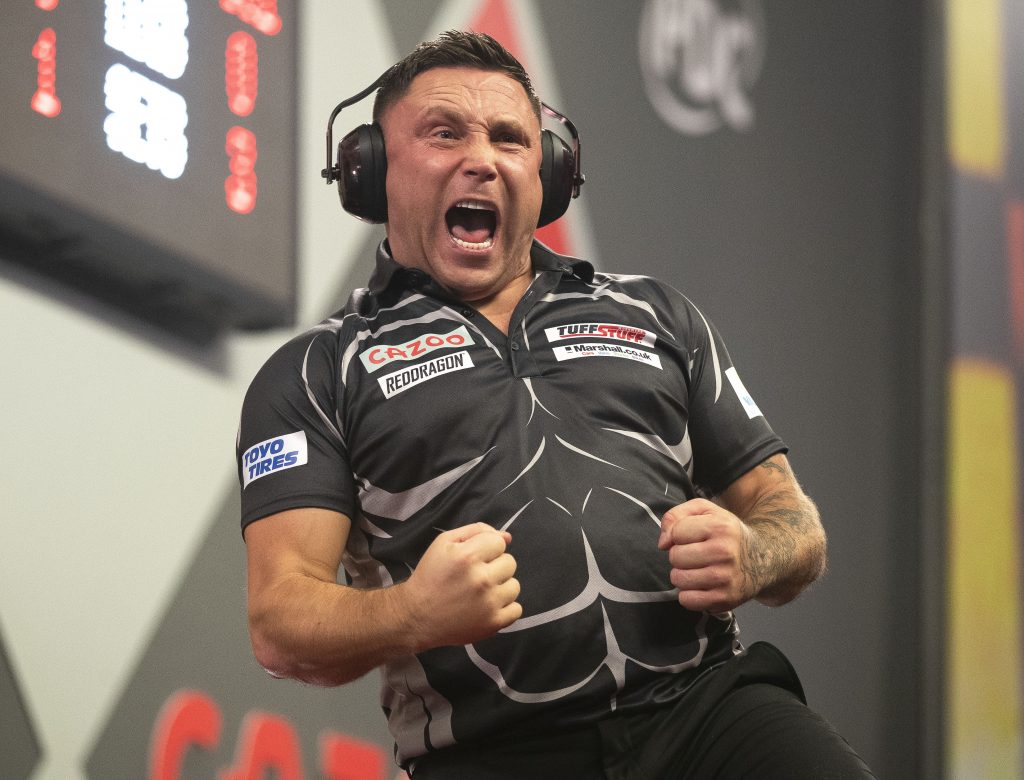
Darts Orakel partnered with the University of Muenster’s Institute of Sport and Exercise Sciences in Germany on some research (the paper will be published soon) into the impacts of crowds on performance in darts. The study considered three different environments: crowds, no crowds, and simulated crowds (like those we saw through parts of 2020 and 2021 in televised PDC events, when artificial noise was used). The research did not go to the depths of whether crowd behaviour was positive or negative towards players in each match studied, which could potentially be a key variable.
The study examined 26,724 individual performances between 2018 and 2021, from more than 400 players across 136 PDC ranking tournaments. About 21,000 of those performances were on the floor, the rest being on stage. The two indicators measured were three-dart averages and checkout percentages. A specific analysis was also done on the top 32 players on the Pro Tour Order of Merit only, who are more accustomed to playing on stage (this was to ensure the results weren’t radically different from the entire sample, which they weren’t).
Older, more general research in the field of social facilitation (performing at a task when others are present) has shown differences between motor tasks that are considered simple (performance increases with an audience) and ones that are considered difficult (performance declines). Additionally, this research showed a correlation between audiences and higher performance at tasks that place demands on the condition of the performers (e.g. more physical activities). The same research demonstrated a correlation between audiences and lower performance at tasks that are less physical but require greater precision. Darts would undoubtedly fall into the second category, although it wasn’t part of that research.
From the sample of darts matches our friends studied, the general conclusion was that players played worse when in front of a crowd, though the overall difference was small. It was larger for checkout percentages than it was for averages (could this be because double attempts are often when crowds get most involved in ways that attempt to put players off – booing, whistling, etc?). Checkout percentages declined by 3.6% from floor to stage, and less dramatically from floor to stage when the crowd was simulated (a drop of 2.5%). Given the vast sample size, this is statistically significant.
Averages had much narrower fluctuations: a decrease of 0.5 points from floor to crowd, and a 0.5 increase from floor to simulated crowd. A half-point swing in either direction is probably not going to translate to a noticeable, impactful, change in performance levels. Averages have the strongest correlation with win/lose outcomes of the two measures, with players winning 80%+ of the time when their average is higher than their opponent.
Returning to Gerwyn Price, we can safely say that he has not only had to play in front of large crowds, but large crowds that make a concerted effort to unsettle him – a different dynamic altogether. There aren’t many who experience it like Price, for us to have a meaningful sample, but we can look at his numbers ever since his win over Anderson in 2018 (from whence he became pantomime villain) and break them down into three periods:
Period 1: December 2018 to March 2020 (after the Anderson match / before crowds stopped).
Period 2: April 2020 to October 2021 (no crowds, restricted crowds or simulated crowds).
Period 3: November 2021 to February 2023 (the return of crowds).
Across all three periods, the difference between his floor averages and stage averages was in a range of 0.61 points to 0.71 points, in each case in favour of floor performances, aligning with the general trend from the research. The period with the least fluctuation between floor and stage was the period with no crowds, but statistically the difference is tiny (0.61 compared to 0.65 and 0.71 ), making it more-or-less irrelevant. Price’s average was highest in Period 2 (no crowds) and dropped in Period 3, but importantly the ups and downs of those periods were consistent across both stage and floor.
Price may find most of the crowds annoying, even upsetting, whilst others will believe they feed off the energy and adulation, but the reality seems to be that neither of these scenarios derails or boosts performance to degrees that are going to make a significant difference over a long timeframe. On this basis, we should bet on Price returning to his previous standards sooner rather than later, even without the ear defenders.
Chris White
Images by Taylor Lanning Photography.

